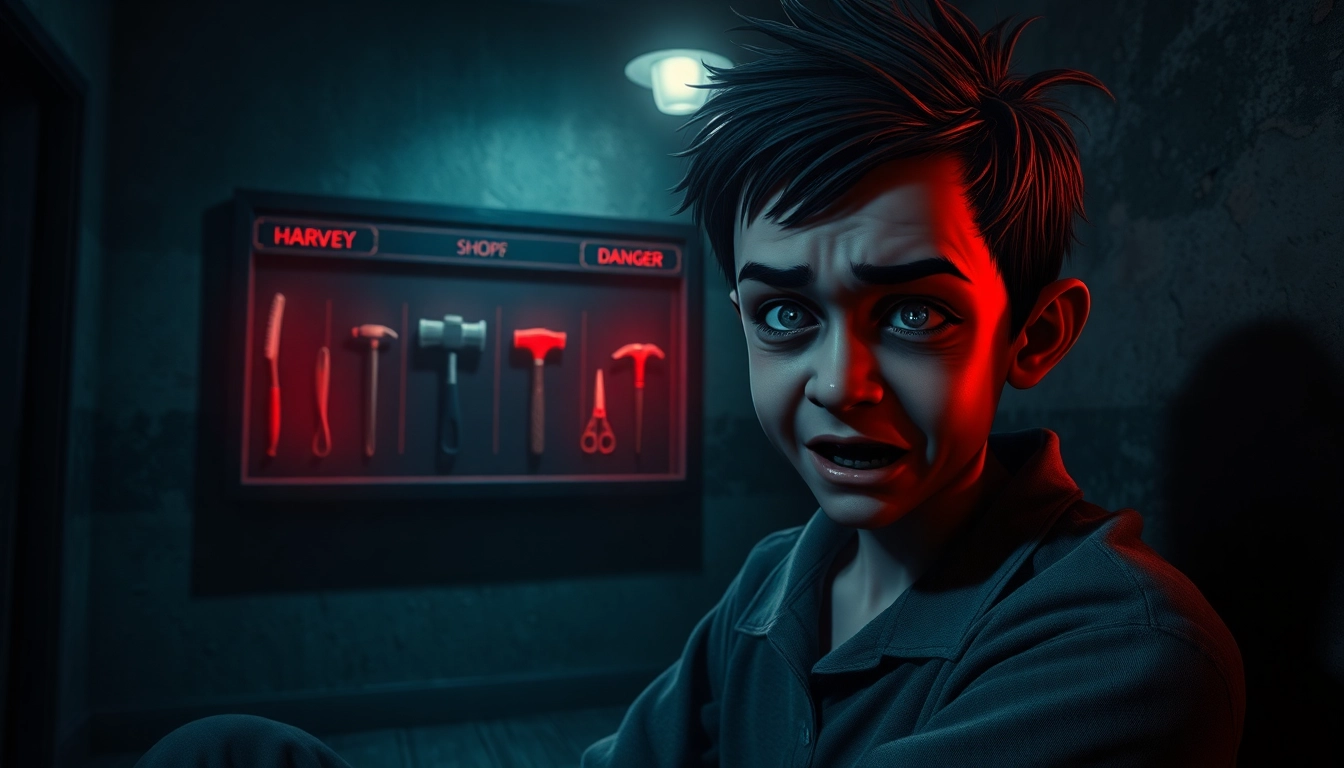
Overview and Context: BloodMoney — A Dark Clicker Psychological Horror Experience
In recent years, the gaming industry has seen a rise in titles that push the boundaries of morality, psychology, and emotional resilience. Among these, blood money stands out as a uniquely disturbing psychological horror clicker game that challenges players not only to survive but also to confront their own moral compass. Unlike traditional horror or casual clicker games, BloodMoney immerses players in a harrowing narrative where every click is a moral choice, every upgrade amplifies suffering, and survival comes at a profound cost. This game is more than just entertainment; it is a visceral exploration of human nature, desperation, and the dark recesses of morality.
The Dark Narrative of BloodMoney and the Community’s Insights
At its core, BloodMoney tells the story of an individual diagnosed with a life-threatening condition, desperately needing $25,000 for critical medical treatment. With limited options and time running out, players are introduced to Harvey—a cheerful, seemingly innocent character—who offers an unorthodox way to earn money: clicking on him repeatedly. Each click generates a financial gain but at a grave moral and emotional toll, as Harvey’s suffering intensifies with every interaction.
The community surrounding BloodMoney has been vocal about its powerful narrative and the moral dilemmas it presents. Many players report feeling genuine guilt and emotional distress as Harvey’s appearance and reactions become increasingly disturbing. This emotional connection is no accident; the game’s design leverages subtle visual cues, dialogue, and escalating violence to evoke a visceral response. As players progress, they are faced with choices that test their ethics—should they minimize Harvey’s pain, or maximize profits regardless of suffering? These choices culminate in multiple endings, each reflecting a different moral stance.
Gameplay Mechanics: Clicking, Upgrades, and Moral Consequences
Clicking Mechanics and the Core Loop
The fundamental gameplay mechanic is simple yet psychologically intense: clicking on Harvey to earn money. Each click adds to a growing total, pushing players closer to their goal of $25,000. Initially, the process appears straightforward and even playful, with Harvey offering a cheerful demeanor that contrasts sharply with the dark undertones. However, as the game progresses, the visual and emotional toll becomes more pronounced.
Upgrade System and Escalating Violence
To accelerate earnings, players can purchase upgrades from the in-game shop. These upgrades range from innocuous tools like pillows, which seem harmless at first, to increasingly violent instruments such as needles, hammers, and knives. Each upgrade enhances the click value but comes with a price—Harvey’s suffering and the visual horror escalate accordingly.
Interestingly, players have noticed that Harvey often appears genuinely surprised by the more violent tools, implying he may not fully understand what is being purchased. For example, Harvey’s initial expectations of harmless items like pillows or soft objects contrast sharply with the brutal reality of the shop’s offerings. This subtle detail adds a layer of moral ambiguity—does Harvey comprehend the pain he endures, or is he oblivious to the violence inflicted upon him?
Multiple Pathways and Endings
The game tracks player choices carefully, leading to three distinct endings: the Good Ending, the Normal Ending, and the Bad Ending. Achieving these depends on how much harm players inflict upon Harvey and the moral balance they strike during gameplay. For instance, minimizing Harvey’s suffering to reach the financial goal results in the Good Ending, where some emotional relief is felt. Conversely, maximizing violence and profit at all costs leads to the Bad Ending, a stark reflection of moral decay.
Psychological Horror and Emotional Impact
Visual and Emotional Toll
BloodMoney excels in creating an unsettling atmosphere. As players continue clicking and upgrading, Harvey’s appearance deteriorates—his expressions shift from cheerful to fearful, and visual cues like blood, injuries, or tearful reactions become more prominent. The game uses these subtle changes to evoke empathy, guilt, and discomfort, blurring the line between gameplay and psychological torment.
The emotional impact is intensified by the game’s sound design and dialogue. Harvey’s cheerful tone gradually shifts to desperation, fear, and pain. This progression is so effective that players often report feeling genuinely disturbed, even though they recognize it’s just a game. The emotional design forces players to confront uncomfortable questions: How far would you go for survival? Is profit worth the moral cost? And what does this say about human nature?
Time Pressure and Psychological Tension
Adding to the tension is the game’s time pressure mechanic, which pushes players to make quick decisions under stress. The clock is ticking towards your medical deadline, heightening the sense of urgency and moral peril. The pressure to reach the financial goal quickly often leads players to make morally questionable choices, deepening the psychological horror.
Multiple Endings: Shaping Harvey’s Fate
The Good Ending
The Good Ending is achieved by minimizing Harvey’s suffering—using less violent tools, limiting clicks, and making moral choices that show compassion. In this ending, Harvey’s appearance remains relatively intact, and the narrative reflects a moral victory. It offers a glimmer of hope and suggests that even in desperate circumstances, moral integrity can prevail.
The Normal Ending
The Normal Ending results from a balanced approach—using moderate violence and accepting some suffering for quicker gains. Harvey’s appearance and reactions show some damage, but not as extreme as in the Bad Ending. This ending reflects a moral compromise, acknowledging that survival often requires difficult choices.
The Bad Ending
Achieving the Bad Ending involves maximizing profit at the expense of Harvey’s suffering—using the most violent tools and clicking relentlessly without regard for his pain. Harvey’s visual state is horrific, and the narrative underscores the moral degradation. This ending symbolizes complete moral failure and the destructive potential of greed and desperation.
The Deep Moral Dilemma: Profit Versus Humanity
BloodMoney is fundamentally a reflection of human morality under duress. It presents players with a stark choice: prioritize survival at any cost or uphold moral integrity. The game challenges players to consider what they are willing to sacrifice for their own well-being. It prompts reflection on real-world issues such as greed, exploitation, and the dehumanization often seen in desperate circumstances.
The game’s design subtly suggests that Harvey is an innocent victim—an embodiment of innocence in a corrupt world. The fact that Harvey appears genuinely surprised by the violent tools implies a level of ignorance or naivety, heightening the moral tension. Are we, as players, responsible for this suffering? Or are we simply responding to a scenario designed to test our moral boundaries?
Community Insights and Player Reactions
The BloodMoney community is highly active, sharing insights, strategies, and emotional reactions. Many players report feeling conflicted about their choices, with some expressing guilt after inflicting harm on Harvey. Others admire the game’s ability to evoke such intense emotional responses and consider it a powerful tool for exploring morality.
Content creators have produced gameplay videos analyzing the various endings, highlighting subtle details like Harvey’s surprised reactions to violent tools, and debating the game’s moral implications. Some viewers see BloodMoney as a mirror of societal greed and the lengths people are willing to go for survival, while others see it as a cautionary tale about the dehumanizing effects of desperation.
The Hidden Depths: Subtle Details and Moral Subtext
Beyond its surface, BloodMoney is rich with subtle details that deepen its moral complexity. For example, Harvey’s reactions to different tools are telling—his surprise at the violent weaponry suggests he may not fully comprehend his suffering, hinting at a possible innocence or ignorance. This detail raises questions about consent, awareness, and responsibility. Is Harvey a willing participant, or is he unwittingly caught in a darker scheme?
The game also subtly explores themes of duality: Harvey, representing innocence and hope, contrasted with the violent shop controlled by darker forces. This duality echoes broader philosophical questions about human nature—are we inherently good, or do circumstances reveal our true selves? BloodMoney invites players to reflect on these questions, making every decision a moral statement.
Comparing BloodMoney to Other Psychological Horror Games
BloodMoney distinguishes itself from other psychological horror titles by its unique clicker mechanic and moral focus. While games like Silent Hill or Amnesia emphasize atmospheric horror and exploration, BloodMoney uses simple mechanics to create an intense moral and emotional experience. Its emphasis on player choice and consequence elevates it above typical horror fare.
Compared to other moral-based games such as The Walking Dead or Heavy Rain, BloodMoney’s distinctive feature is its visceral, disturbing visuals combined with the incremental, addictive clicking mechanic. It strips away traditional narrative devices, relying instead on visual cues, dialogue, and gameplay choices to evoke emotional responses.
Reflections on Ethical Boundaries in Gaming and Reality
BloodMoney pushes players to confront uncomfortable truths about morality, greed, and survival. It raises questions about the ethical boundaries we are willing to cross—even in virtual worlds. The game’s intense emotional design prompts introspection: How far would you go for your own survival? Would you sacrifice innocence, empathy, or morality?
While some may dismiss the game as just another dark entertainment experience, its deeper value lies in its capacity to provoke thought and discussion about real-world issues. It challenges players to consider the consequences of their choices, both in-game and beyond.
Conclusion: The Enduring Power of BloodMoney
In conclusion, blood money is more than a disturbing clicker game. It is a profound exploration of morality under extreme circumstances, a psychological horror that tests the limits of human empathy and ethical boundaries. Its thoughtful design, emotional impact, and moral complexity make it a standout in the realm of psychological horror games.
Whether you choose the path of compassion or greed, BloodMoney leaves a lasting impression—reminding us that in the darkest moments, our choices define who we are. As you navigate the twisted journey of Harvey, consider what your decisions say about your own moral compass. How far are you willing to go when survival is at stake? The answer lies within your choices, and the game’s powerful message about the human condition.
For those interested in exploring this unsettling yet thought-provoking experience, visit blood money to learn more and download the game. Remember, in the game of morality, every click counts—and every choice shapes Harvey’s fate.




